How to make Indian food .
Indian food is a symphony of flavors, aromas, and colors. It’s an art form that has been honed over centuries and carries with it a deep cultural significance. But you don’t have to be a seasoned chef to make authentic Indian cuisine at home. Whether you’re an Indian food lover, a home cook looking for new recipes, or a food blogger eager to expand your repertoire, this guide will walk you through the basics of making Indian food right in your kitchen.
Understanding Indian Cuisine
India is a diverse country with a rich and varied cuisine. Each region has its own unique flavors, ingredients, and cooking techniques. However, there are some common elements that tie all the different regional cuisines together.
Spices
One of the defining features of Indian cuisine is its use of spices. Indian food is not necessarily spicy in terms of heat, but it is packed with layers of flavor from a variety of spices like cumin, coriander, turmeric, cardamom, cinnamon, and many more. These spices not only add depth to dishes but also have health benefits and medicinal properties.
Vegetarianism
A large percentage of the population in India follows a vegetarian diet, which is reflected in the cuisine. Vegetarian dishes are popular and widely available, making Indian food a great option for vegetarians or those looking to incorporate more plant-based meals into their diet.
Regional Specialties
As mentioned before, each region in India has its own unique cuisine. Some well-known regional specialties include butter chicken from Punjab, dosa from South India, and biryani from Hyderabad. Exploring these different regional cuisines is like taking a culinary tour of the country.
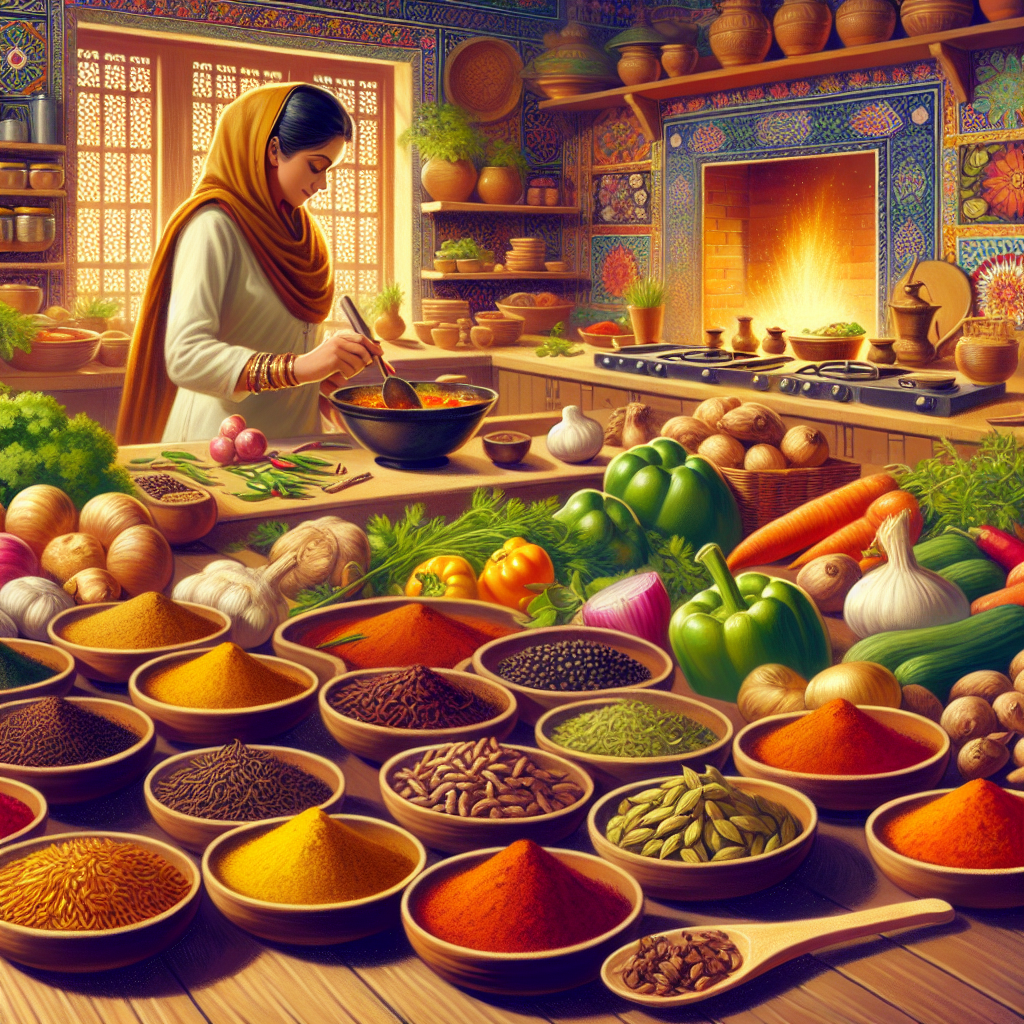
Discovering the Richness of Indian Cuisine
While spices play a crucial role in Indian cuisine, there’s much more to it than just that. Each region in India has its own unique dishes and cooking styles that reflect the local culture and resources. Here are some popular regions and their specialties:
North India
North Indian cuisine is known for its rich and creamy curries, tandoori dishes, and use of dairy products like ghee (clarified butter) and paneer (Indian cottage cheese). The iconic dish from this region is the famous butter chicken, along with other favorites like palak paneer (spinach and cottage cheese curry) and biryani (spiced rice dish).
South India
South Indian cuisine showcases a wide variety of vegetarian dishes, with the liberal use of coconut, tamarind, and curry leaves. Dishes like dosa (savory crepes), sambar (vegetable lentil stew), and rasam (spicy soup) are popular in this region. The coastal areas of South India are also famous for their seafood dishes.
East India
The cuisine from Eastern India is known for its use of mustard oil, fish, and rice as staple ingredients. Some popular dishes from this region include macher jhol (fish curry), alu posto (potatoes cooked in poppy seeds paste), and cholar dal (split chickpea stew).
West India
West Indian cuisine is heavily influenced by the flavors of Gujarat, Maharashtra, and Rajasthan. It’s known for its spicy dishes, street food, and use of lentils, beans, and legumes. Some popular dishes from this region include pav bhaji (vegetable curry served with bread), dhokla (steamed savory cake), and dal baati churma (lentil stew served with baked dough balls).
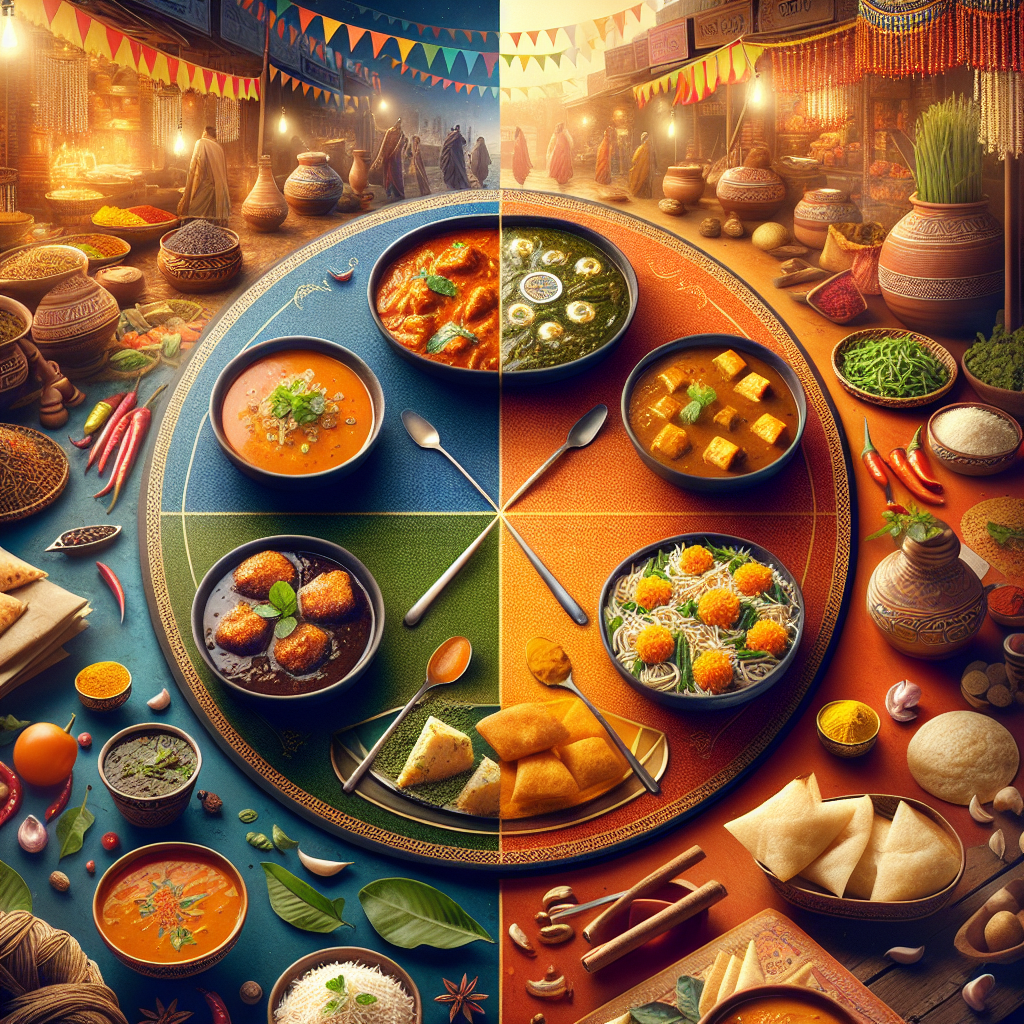
Cooking Techniques
Just like the ingredients used in Indian cuisine vary from region to region, so do the cooking techniques. Here are some common methods that you’ll encounter while making Indian food:
Tadka/Tempering
This method involves heating spices in oil or ghee until they release their aromas and flavors. It’s used at the beginning of cooking to infuse dishes with rich flavors.
Masala/Spice Blend
Masalas are spice blends that vary from region to region and even household to household. They can be bought pre-made or made at home by grinding together a combination of spices.
Dhungar/Smoke Infusion
This technique involves adding smoke to a dish by placing a piece of charcoal in the center and pouring ghee or oil over it. The dish is then covered, allowing the smoke to infuse into the food.
Bringing Indian Cuisine Into Your Kitchen
Now that you have an understanding of the basics of Indian cuisine,
Indian cuisine is incredibly diverse, with each region offering its own unique flavors and cooking techniques. From the creamy curries of the North to the tangy and spicy dishes of the South, there’s something for everyone. The use of spices like turmeric, cumin, coriander, and cardamom is central to Indian cooking, creating complex layers of taste that are sure to excite your palate.
Essential Ingredients for Indian Cooking
Before you start cooking, it’s important to stock your pantry with some essential ingredients. These include spices like cumin, coriander, turmeric, and garam masala. You’ll also need staples like rice, lentils, and various types of flour. Fresh ingredients like garlic, ginger, and cilantro are also crucial for achieving authentic flavors.
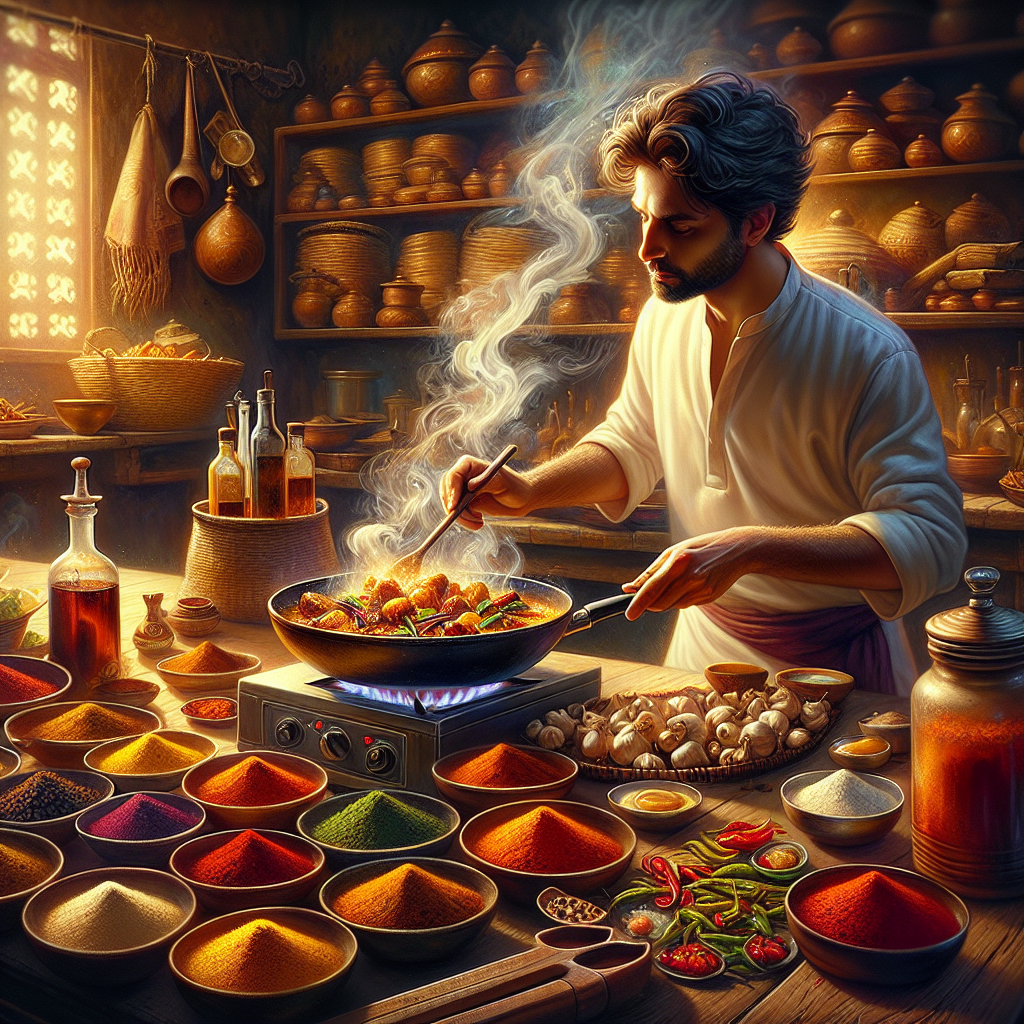
The Importance of Spices
Spices are the heart and soul of Indian cuisine. They not only add flavor but also offer numerous health benefits. For example, turmeric is known for its anti-inflammatory properties, while cumin aids digestion. Learning how to use and balance these spices is key to mastering Indian cooking.
Mastering Basic Techniques
Indian cooking involves several basic techniques that are easy to learn but crucial for achieving authentic flavors. These include:
- Tempering: This involves frying spices in hot oil to release their flavors. It’s often the first step in many Indian recipes.
- Gravy Making: Indian curries often start with a base of onions, tomatoes, garlic, and ginger. Learning how to blend and cook these ingredients is essential.
- Baking and Grilling: Many Indian dishes, like naan and tandoori chicken, involve baking or grilling. While a traditional tandoor oven is ideal, you can achieve similar results with a regular oven or grill.
Butter Chicken Recipe
Butter Chicken is one of the most popular Indian dishes worldwide. It’s rich, creamy, and bursting with flavor. Here’s a simple recipe to get you started:
Ingredients
- 500g boneless chicken pieces
- 1 cup yogurt
- 2 tbsp butter
- 1 cup tomato puree
- 1/2 cup cream
- 2 tbsp garam masala
- 1 tbsp ginger-garlic paste
- Salt to taste
Instructions
- Marinate the chicken in yogurt, ginger-garlic paste, and garam masala for at least 2 hours.
- Heat butter in a pan and add the marinated chicken. Cook until tender.
- Add tomato puree and cook until the oil separates.
- Stir in the cream and simmer for a few minutes.
- Serve hot with naan or rice.
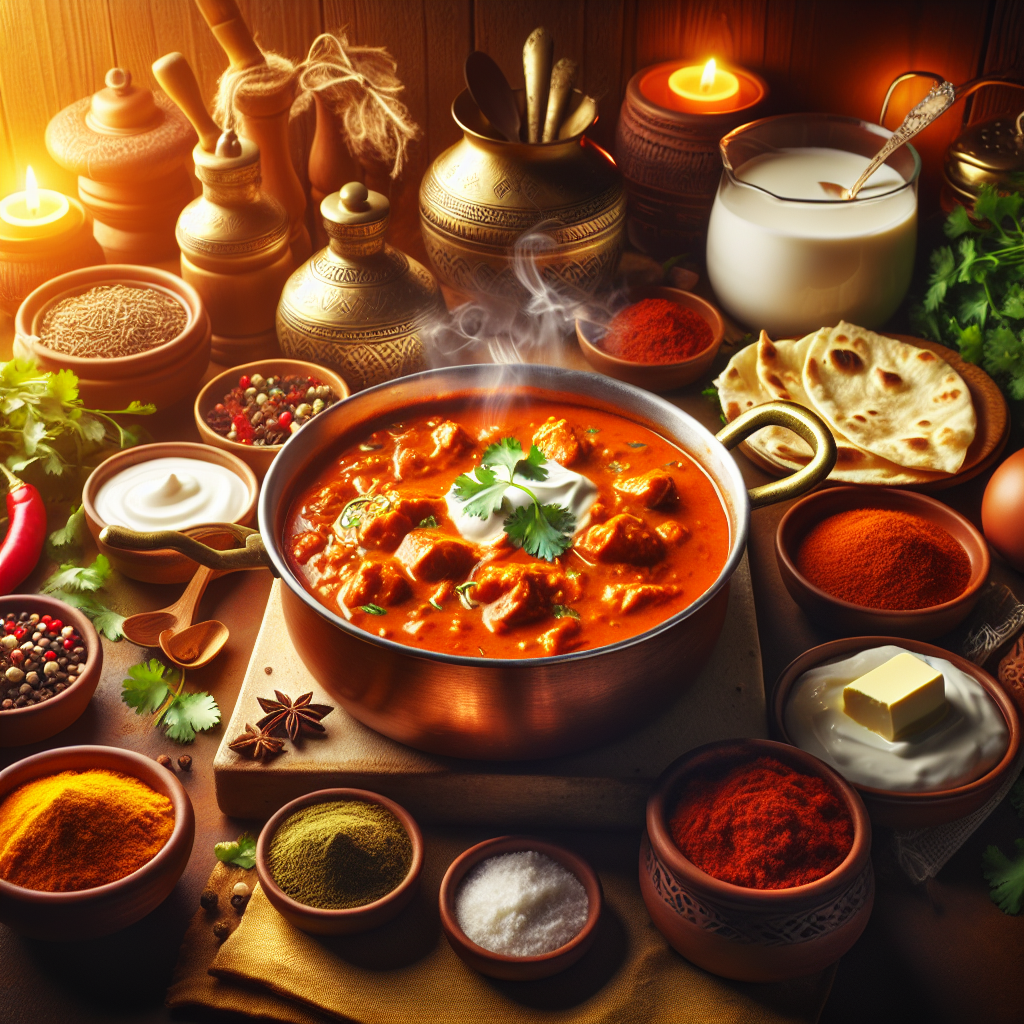
Paneer Tikka Recipe
Paneer Tikka is a popular vegetarian dish that’s perfect for any occasion. It’s made by marinating paneer (Indian cottage cheese) in a mixture of yogurt and spices, then grilling it to perfection.
Ingredients
- 250g paneer, cut into cubes
- 1 cup yogurt
- 2 tbsp gram flour
- 1 tbsp ginger-garlic paste
- 1 tsp turmeric
- 1 tsp red chili powder
- 1 tsp garam masala
- Salt to taste
Instructions
- In a bowl, mix yogurt, gram flour, ginger-garlic paste, and spices.
- Add the paneer cubes and marinate for at least 1 hour.
- Preheat the grill and skewer the marinated paneer.
- Grill until the paneer is golden brown and slightly charred.
- Serve with mint chutney.
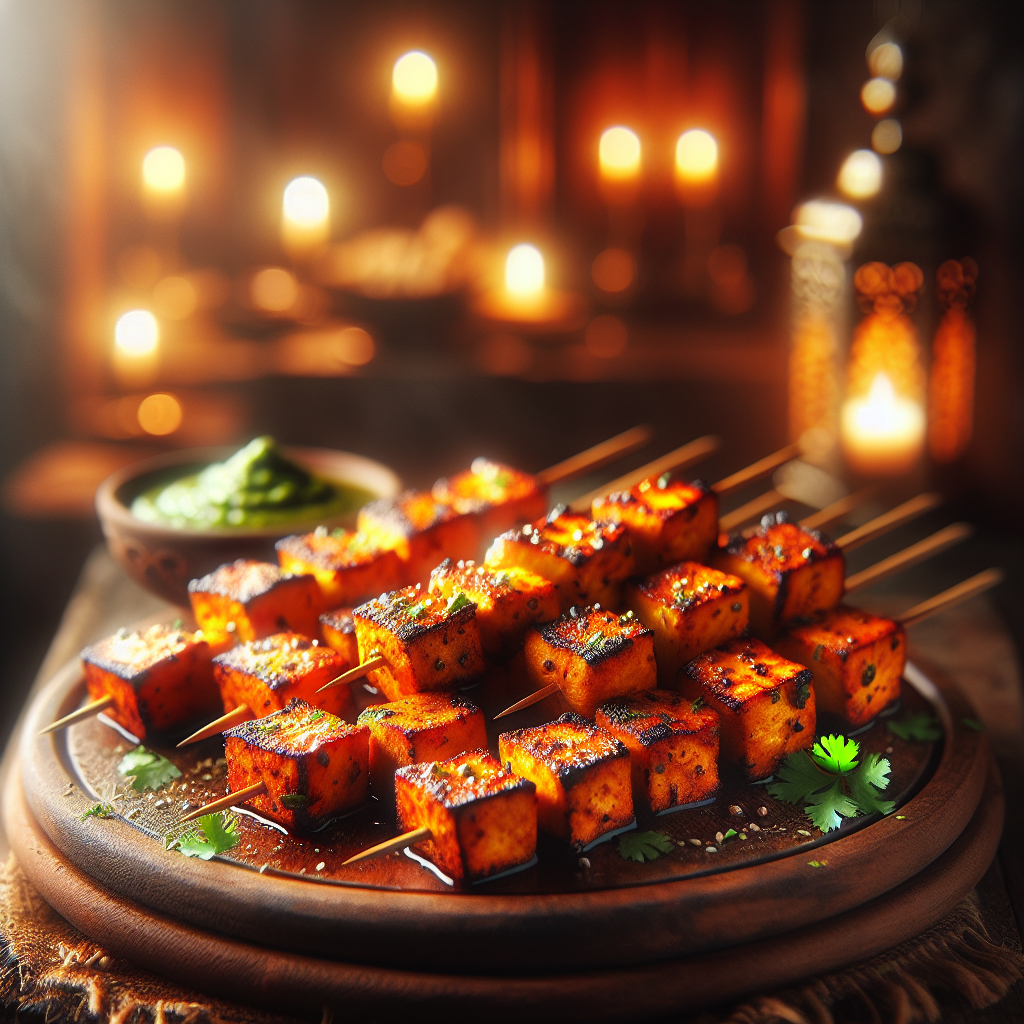
Aloo Gobi Recipe
Aloo Gobi is a simple yet flavorful dish made with potatoes (aloo) and cauliflower (gobi). It’s a staple in many Indian households.
Ingredients
- 2 potatoes, peeled and cubed
- 1 cauliflower, cut into florets
- 1 onion, chopped
- 2 tomatoes, chopped
- 1 tbsp ginger-garlic paste
- 1 tsp turmeric
- 1 tsp cumin seeds
- 1 tsp coriander powder
- Salt to taste
Instructions
- Heat oil in a pan and add cumin seeds.
- Once the seeds start to splutter, add onions and ginger-garlic paste. Sauté until golden brown.
- Add tomatoes, turmeric, and coriander powder. Cook until the tomatoes are soft.
- Add potatoes and cauliflower. Mix well and cook covered until vegetables are tender.
- Serve hot with roti or rice.
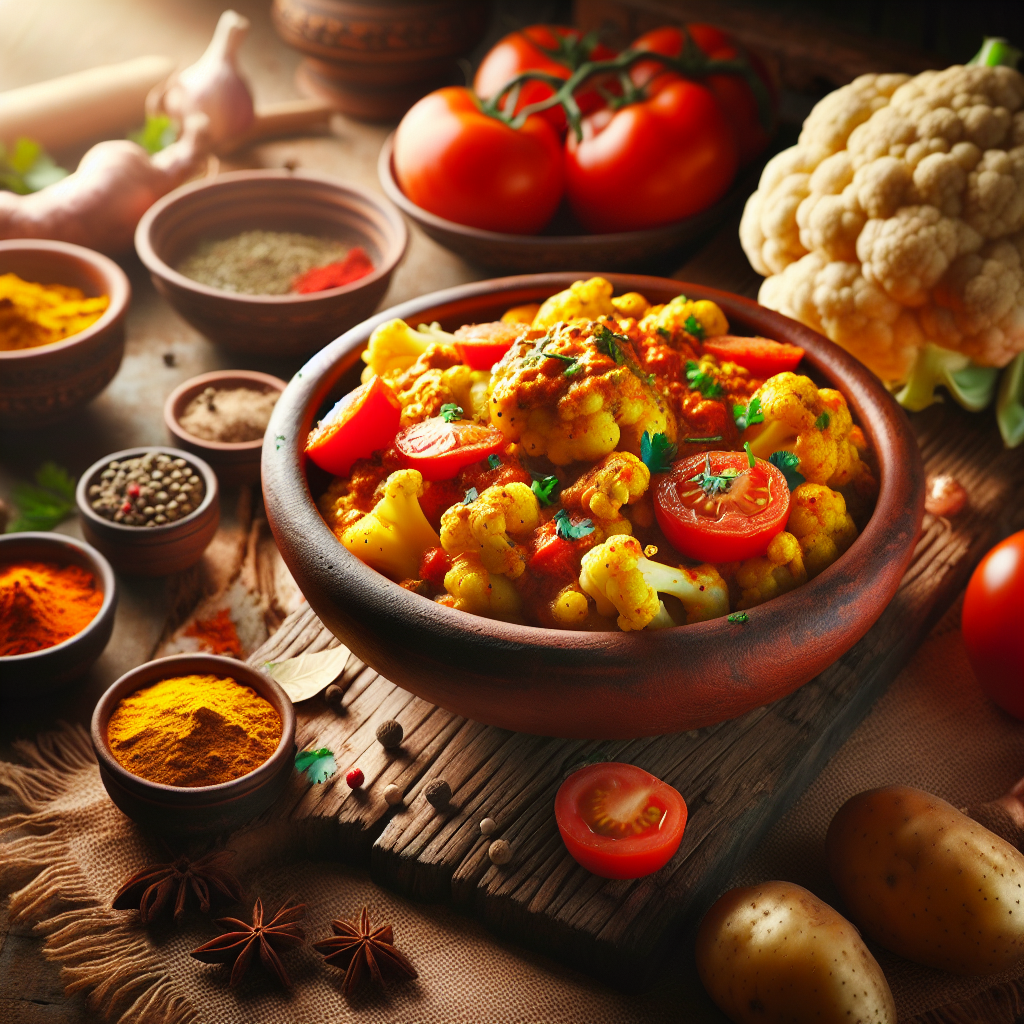
Pairing Indian Dishes with the Perfect Sides
A great Indian meal is not complete without the right sides. Roti, naan, and rice are traditional accompaniments that enhance the flavors of the main dishes. Indian pickles, yogurt-based raita, and salads also add a refreshing contrast to spicy curries.
Tips for Cooking Indian Food at Home
- Start Simple: If you’re new to Indian cooking, start with simple recipes like dal (lentil soup) or vegetable curry.
- Use Fresh Ingredients: The freshness of ingredients can make a huge difference in the final taste.
- Balance the Spices: Don’t be afraid to experiment with spices, but always taste as you go to ensure balance.
- Prepare in Advance: Many Indian dishes involve multiple steps, so preparing ingredients in advance can make the cooking process smoother.
Health Benefits of Indian Cuisine
Indian food is not just delicious; it’s also packed with health benefits. Spices like turmeric and ginger have anti-inflammatory properties. Lentils and beans are excellent sources of protein and fiber. Indian cuisine also emphasizes fresh vegetables, making it a balanced and nutritious option.
Common Misconceptions About Indian Food
Some people think Indian food is overly spicy or complicated to make. However, with the right guidance, you can easily adjust the spice levels to suit your taste and find that many recipes are straightforward and easy to follow.
Exploring Regional Variations
India’s culinary landscape is vast and varied. Each region has its own specialties, from the rich Mughlai cuisine of the North to the coconut-based curries of the South. Exploring these regional variations can open up a whole new world of flavors.
Joining the Indian Food Community
Cooking Indian food at home is just the beginning. Joining online forums, following food bloggers, and attending cooking classes can help you deepen your knowledge and connect with fellow Indian food enthusiasts.
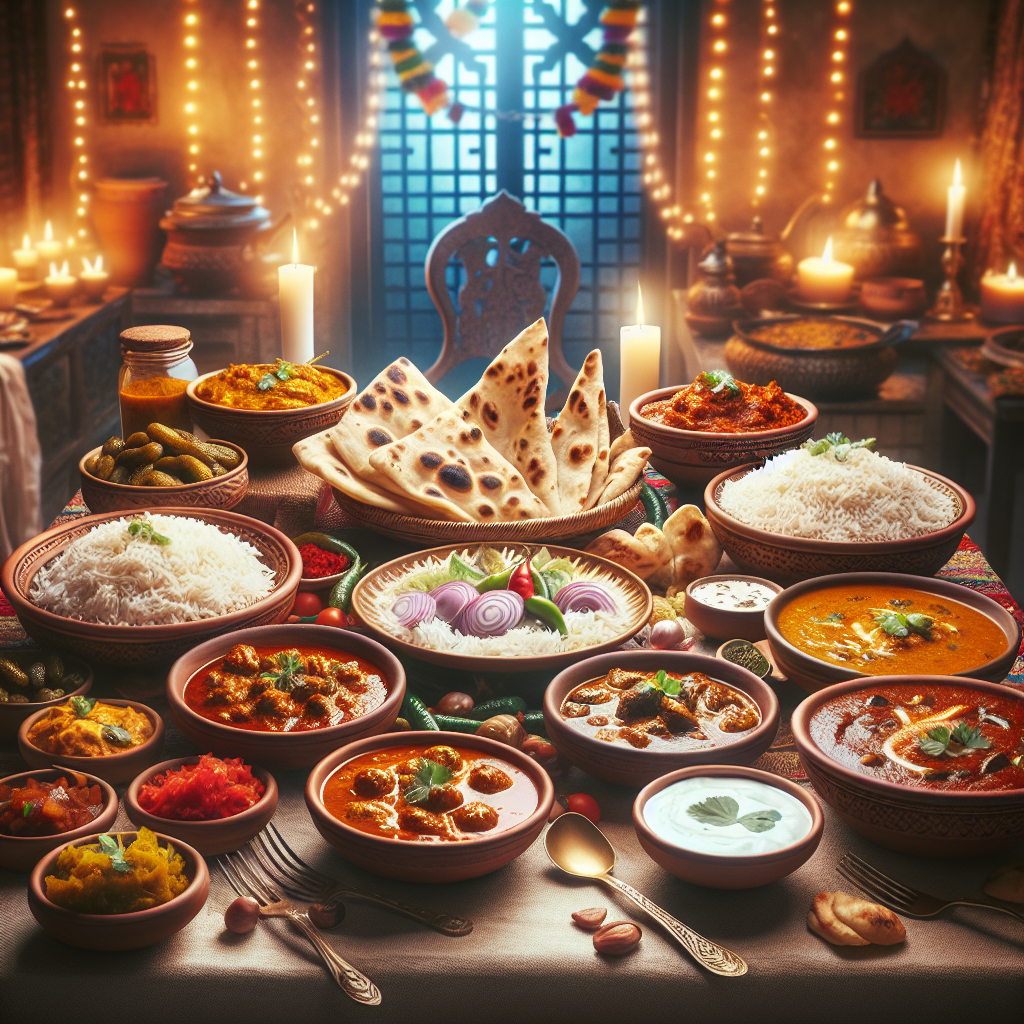
The Joy of Sharing Indian Meals
One of the best parts of cooking Indian food is sharing it with others. Whether it’s a family dinner or a gathering with friends, Indian meals are meant to be enjoyed together. The joy of seeing your loved ones savoring a meal you’ve prepared is truly unmatched.
Final Thoughts on Making Indian Food at Home
Making Indian food at home is a rewarding experience that allows you to explore new flavors and techniques. With the right ingredients, a handful of spices, and some enthusiasm, you can create delicious and authentic Indian dishes that will impress your family and friends.
Whether you’re cooking for yourself or hosting a dinner party, remember that practice makes perfect. The more you cook, the more confident you’ll become in your abilities. Happy cooking!
Ready to take your Indian cooking skills to the next level? Sign up for our newsletter for more recipes, tips, and exclusive offers. Happy cooking! So, don’t wait any longer and start experimenting with these delicious Indian recipes at home. Happy cooking!
Join the Indian Food Revolution
Indian cuisine is gaining popularity all over the world, and for good reason. Its unique flavors and health benefits make it a favorite among many food lovers.
So why not join the Indian food revolution? Start by trying out some of the simple recipes mentioned above. With patience and practice, you’ll be able to create authentic, flavorful dishes that will impress your taste buds and those of others.
By learning about different ingredients, regional variations, and techniques, you can expand your culinary skills and add a new dimension to your cooking repertoire. And don’t forget to share your creations with others – after all, food tastes even better when it’s shared with loved ones.
So, what are you waiting for? Let’s get cooking! Happy eating and happy sharing! `
Remember to always have fun and be open to trying new things in the kitchen. With Indian cuisine, the possibilities are endless. Whether you’re a beginner or an experienced cook, there’s always something new to discover and enjoy. So gather your ingredients and spices, turn on some Bollywood music for inspiration, and let’s bring the vibrant flavors of India into our homes. Namaste! 🙏🏽 Keep exploring and experimenting with Indian food – there is no end to the deliciousness! Happy cooking! 🍴 So, let’s continue this culinary journey together and continue to share the joy of Indian food with those around us. See you in the kitchen! 🍛🥘🌶️🧄🧅🍲
Keep learning and exploring different recipes and techniques, and don’t be afraid to put your own spin on traditional dishes. Who knows, you may just discover a new family favorite.
Lastly, remember that food is not just about nourishing our bodies; it also brings people together. So invite your loved ones over for an Indian feast or bring a dish to a potluck and share the love and flavors of India with others. Happy cooking and happy eating! 🍽️🥂 Namaste! 🙏🏽
Now that you have a better understanding of Indian cuisine, it’s time to roll up your sleeves and get cooking! Don’t be intimidated by the long list of ingredients or multiple steps in some recipes – take it one step at a time and enjoy the process.
And don’t forget to share your experiences and creations with others. Join online communities, attend cooking classes, or simply invite friends over for a meal. The beauty of Indian food is not just in its taste but also in the connections and memories it creates. So let’s keep spreading the joy of Indian cuisine together. Happy cooking and happy eating! 🍴🌶️🧄🧅🍲 Namaste! 🙏🏽 So, what are you waiting for? Start exploring the wonderful world of Indian food today! Happy cooking and happy eating! 🍽️🥂 Happy cooking and bon appétit! 🍲💕 Keep experimenting with new ingredients, flavors, and techniques to create your own unique dishes. And don’t forget to share them with others – because good food is meant to be shared. Cheers to the vibrant and flavorful world of Indian cuisine! 🌶️🧄🧅🍲 Namaste! 🙏🏽 In conclusion, Indian food is so much more than just curry and spices. It’s a melting pot of flavors, techniques, and cultures that has something for everyone to enjoy. So let’s continue to explore and appreciate the richness of Indian cuisine together. Happy cooking and happy eating! 🍴🌶️🧄🧅🍲 Namaste! 🙏🏽 Happy cooking and bon appétit! 🍲💕 Keep experimenting with new ingredients, flavors, and techniques to create your own unique dishes. And don’t forget to share them with others – because good food is meant to be shared. Cheers to the vibrant and flavorful world of Indian cuisine! 🌶️🧄🧅🍲 Namaste! 🙏🏽 In conclusion, Indian food is so much more than just curry and spices. It’s a melting pot of flavors, techniques, and cultures that has something for everyone to enjoy. So let’s continue to explore and appreciate the richness of Indian cuisine together. Happy cooking and happy eating! 🍴🌶️🧄🧅🍲 Namaste! 🙏
Now that you have a better understanding of Indian cuisine, it’s time to get creative in the kitchen. Don’t be afraid to mix and match different spices, experiment with new ingredients, and put your own spin on traditional dishes.
Remember, cooking is all about having fun and enjoying the process. So gather your loved ones around and share the joy of creating delicious Indian meals at home. And don’t forget to savor every bite – because good food not only nourishes our bodies but also brings us closer together.
Thank you for joining us on this culinary journey through the rich and diverse world of Indian cuisine. We hope this guide has inspired you to try new dishes, explore new flavors, and create unforgettable memories in the kitchen. Happy cooking and happy eating! 🍴🌶
Powed by. reflex[…]

Enjoy your Indian food.